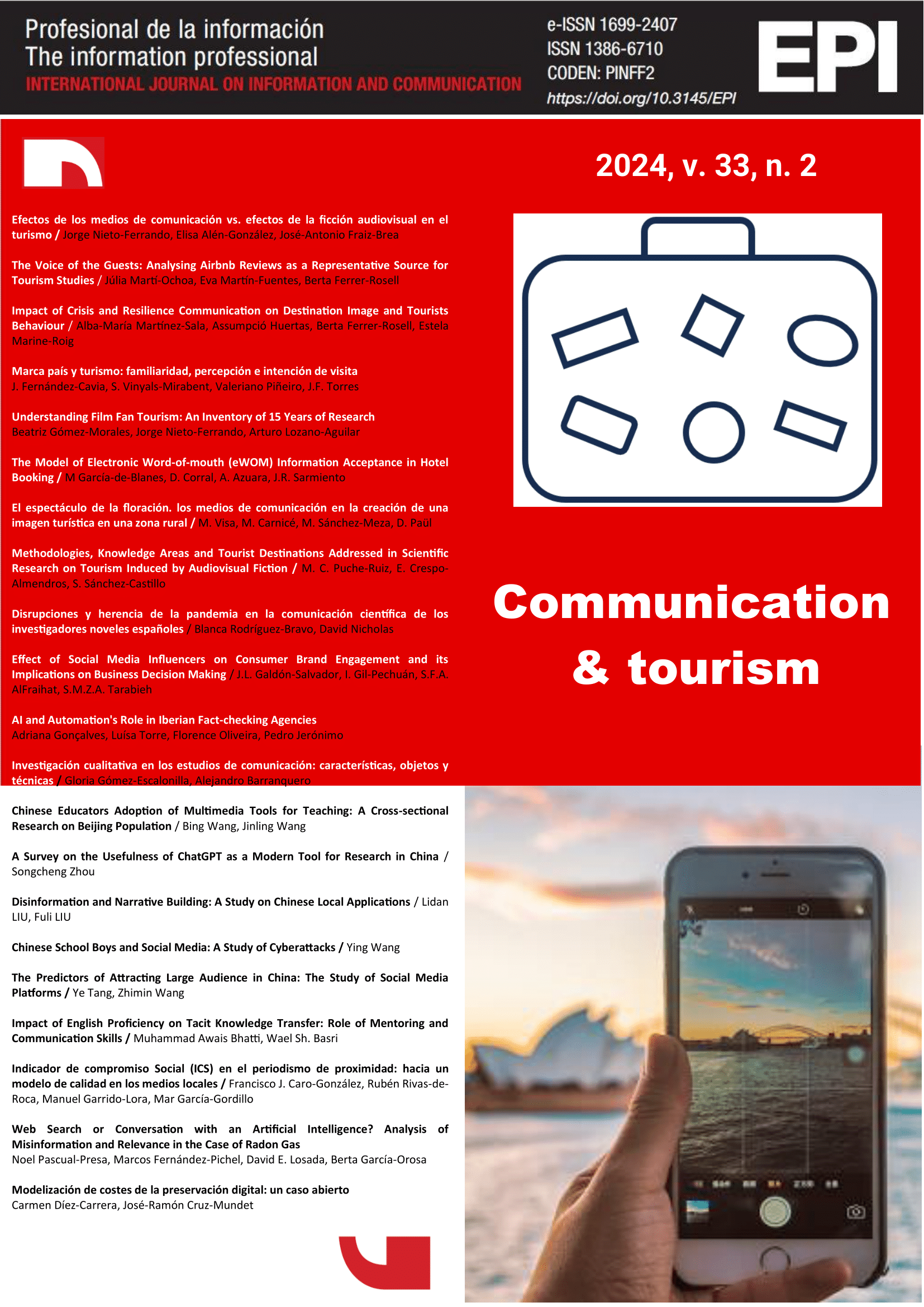Impacto de la comunicación de crisis y de resiliencia en la imagen de destino y el comportamiento del turista
DOI:
https://doi.org/10.3145/epi.2024.0203Palabras clave:
Estrategia de Comunicación, Comunicación de Crisis, Gestión de Crisis, Imagen de Destino, Organización de Marketing de Destinos, Recomendación de Destino, Facebook, Pandemia, Comunicación de Resiliencia, Riesgo de Salud Percibido, Impresión del Post, Social Media, Redes Sociales, Turismo, Intención de Visita.Resumen
Resilience communication is a fundamental tool for destinations to improve their image and recover after a crisis. Social media are key tools in tourism communication that generate tourist experiences and destination image, and at the same time, they play a fundamental role in times of crisis. Based on a series of hypotheses, a conceptual model of crisis or resilience communication management is proposed that responds to the need to establish a set of premises related to this type of communication in the tourism sector. This is an analytical empirical study consisting of a quantitative analysis using a questionnaire, the results of which are used to test the hypotheses proposed based on a structural equation model. The results highlight the importance of social media communication in relation to health risk perception (HRP). This impacts the perception of posts, the destination image, and behavior related to the destination (destination recommendation, DR, and intention to visit, VI). The four hypotheses that comprise the conceptual research model are confirmed, as the effects are statistically significant in the sample of posts, and the selected elements explain each of the factors. Specifically, it is verified that PHR negatively affects destination image (DI) and, mainly, the impression generated by the post (PI). Secondly, PI and DI mutually influence each other and covary to a certain extent. Furthermore, general DI, affected by PHR, in turn affects DR and VI, demonstrating that PHR through communication also negatively influences DR and VI. Finally, it is also found that both DR and VI are related and covary as intrinsic behavioral aspects related to DI. Resilience communication is a basic tool for destinations to improve their image and recover from a crisis. This research contributes to the literature on this transcendental issue by analyzing the impact of this type of communication on tourists, and specifically on destination image.
Descargas
Publicado
Cómo citar
Número
Sección
Licencia
Derechos de autor 2024 Profesional de la información

Esta obra está bajo una licencia internacional Creative Commons Atribución 4.0.
Condiciones de difusión de los artículos una vez son publicados
Los autores pueden publicitar libremente sus artículos en webs, redes sociales y repositorios
Deberán respetarse sin embargo, las siguientes condiciones:
- Solo deberá hacerse pública la versión editorial. Rogamos que no se publiquen preprints, postprints o pruebas de imprenta.
- Junto con esa copia ha de incluirse una mención específica de la publicación en la que ha aparecido el texto, añadiendo además un enlace clicable a la URL: http://revista.profesionaldelainformacion.com
La revista Profesional de la información ofrece los artículos en acceso abierto con una licencia Creative Commons BY.




